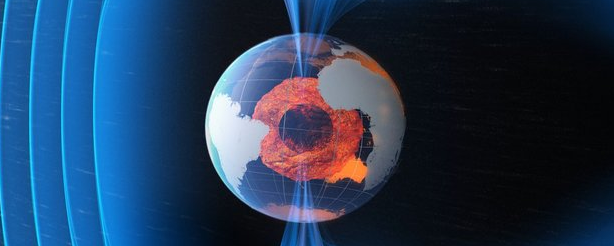Three-satellite Swarm constellation launched to study Earth's magnetic field

ESA’s three-satellite "Swarm" constellation was launched into a near-polar orbit by a Russian Rockot launcher on November 22, 2013. In next four years, Swarm satellites will monitor Earth’s magnetic field, from the depth of our planet’s core to the heights of its upper atmosphere.
Our magnetic field plays a major role in protecting the biosphere because it generates a bubble around our planet that deflects charged particles and traps them in the radiation belts. This shielding protects all life on Earth from the bombardment of heavy ions coming from the Sun and deep space.
Since the 1980's, previous missions have showed that Earth's magnetic field is weakening, which could be a sign that the north and south magnetic poles are beginning to reverse. Although such inversions usually take thousands years to complete, they are known to have occurred on multiple occasions during geological times.
ESA’s director for Earth observation, Volker Liebig, said Swarm is about to fill a gap in our view of the Earth system and in our monitoring of global change issues.
.jpg)
Swarm instruments (side view). Image credit: ESA
The combination of data collected by Swarm will give precious information on the sources of the magnetic field inside Earth. This includes understanding how the magnetic field is related to the motion of molten iron in the outer core, how the conductivity of the mantle is related to its composition and how the crust has been magnetised over geological timescales.
They will also investigate how the magnetic field relates to Earth’s environment through the radiation belts and their near-Earth effects, including the solar wind energy input into the upper atmosphere.
Swarm will also be able to distinguish between the various sources of our planet’s magnetic field and ensure continuity in its monitoring from space in conjunction with measurements from ground observatories.
- ESA's magnetic field mission "Swarm"
- Earth's Magnetic Field Fading (National Geographic, 2004)
- About geomagnetic reversal and poleshift (The Watchers, 2011)
Featured image: The magnetic field and electric currents near Earth generate complex forces that have immeasurable impact on our everyday lives. Although we know that the magnetic field originates from several sources, exactly how it is generated and why it changes is not yet fully understood. ESA’s Swarm mission will help untangle the complexities of the field. Image credit: ESA/ATG Medialab

Commenting rules and guidelines
We value the thoughts and opinions of our readers and welcome healthy discussions on our website. In order to maintain a respectful and positive community, we ask that all commenters follow these rules.